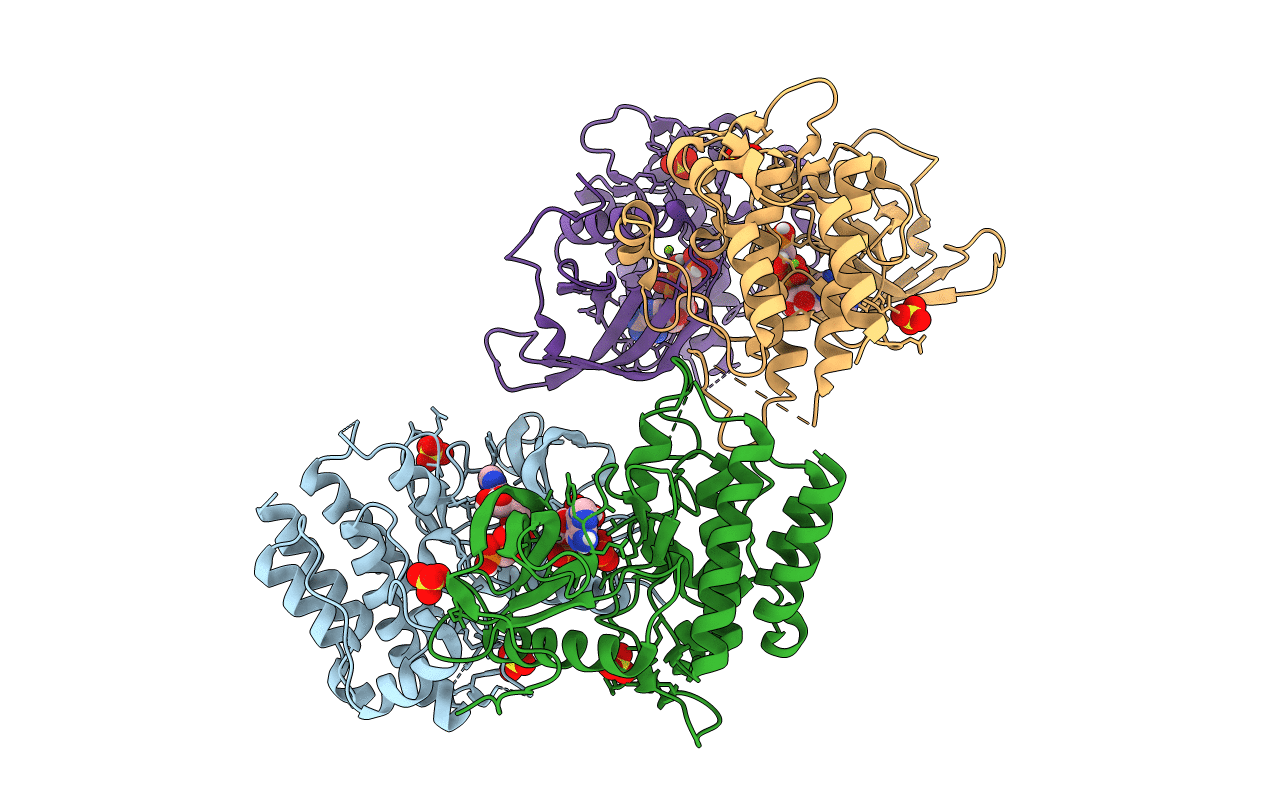
Deposition Date
2013-02-15
Release Date
2013-08-07
Last Version Date
2023-09-20
Entry Detail
PDB ID:
4J99
Keywords:
Title:
Crystal Structure of FGF Receptor 2 (FGFR2) Kinase Domain Harboring the Gain-of-Function K659T Mutation.
Biological Source:
Source Organism:
Homo sapiens (Taxon ID: 9606)
Host Organism:
Method Details:
Experimental Method:
Resolution:
1.85 Å
R-Value Free:
0.24
R-Value Work:
0.20
R-Value Observed:
0.20
Space Group:
C 1 2 1


